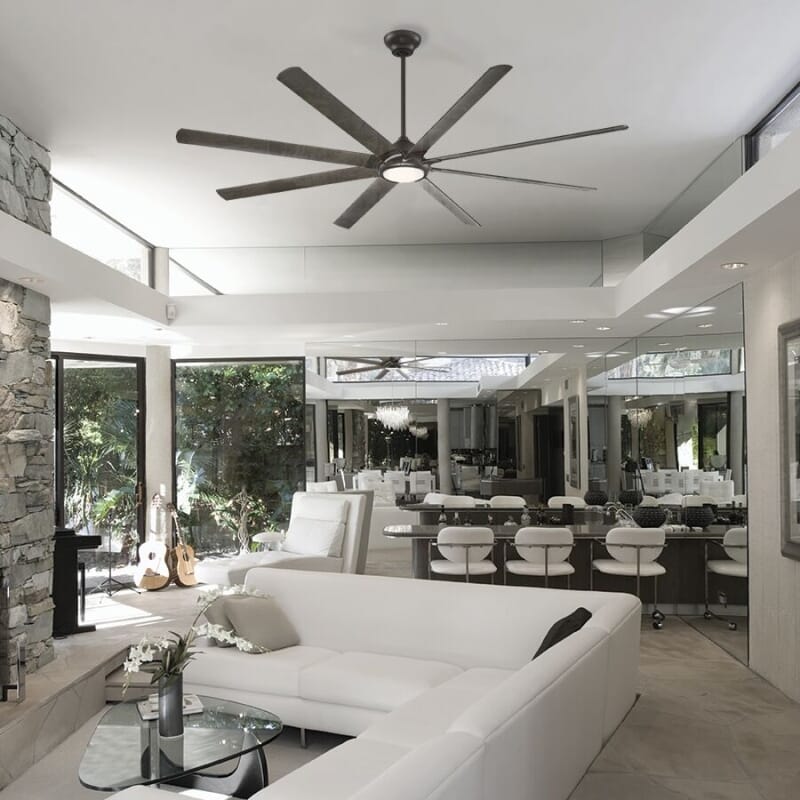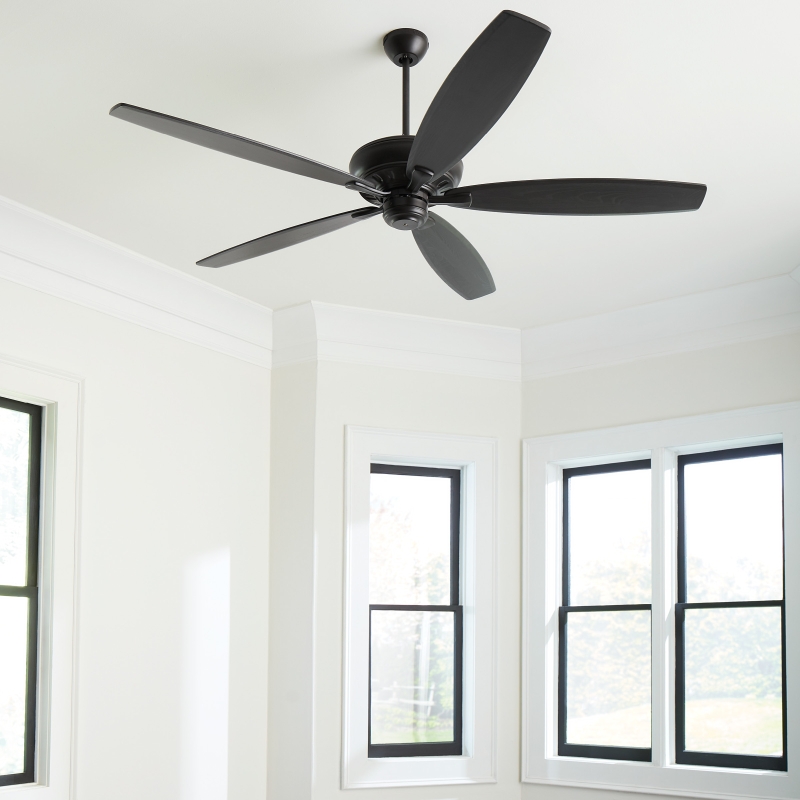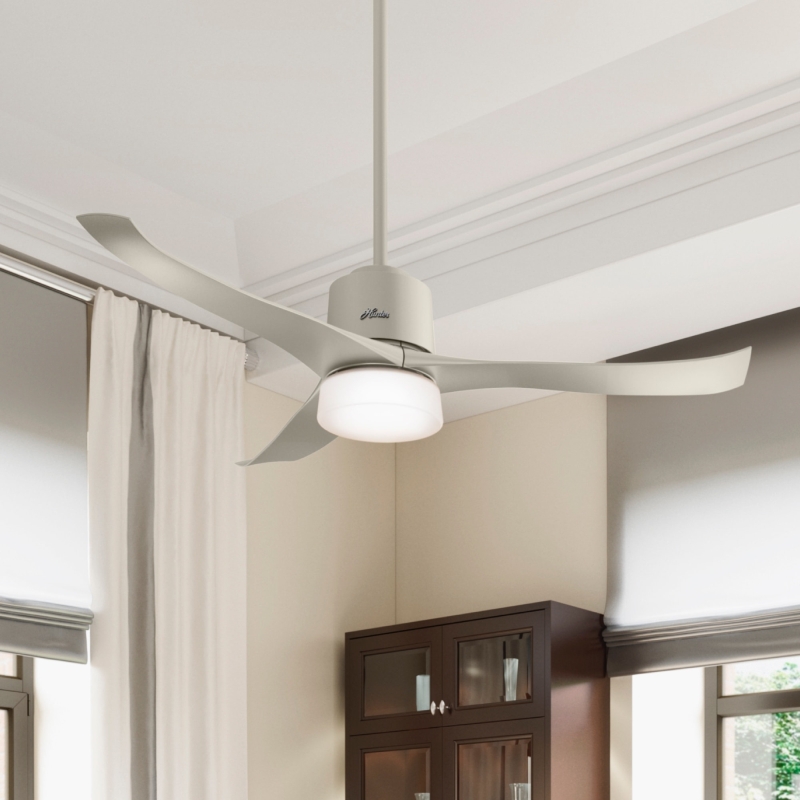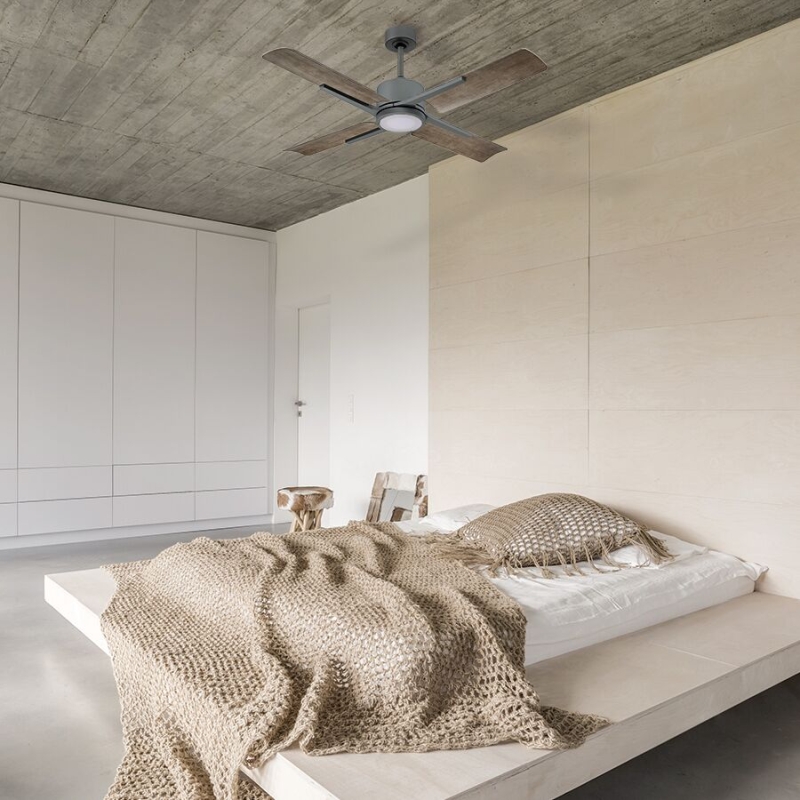Ceiling fans have been around since the 1880s, and among their advantages is reliability and longevity. So why would you want to replace the ones that came with your house or that you bought 15 years ago? There are several good reasons.
First of all, if your ceiling fans have pull chains, you’re already due for an upgrade and might as well make a quantum leap into greater convenience and efficiency by buying new ones. If your fans are controlled by a hand-held remote or a wall switch – an improvement over the pull chain – you may be surprised to learn that today’s ceiling fans have significantly advanced in their capabilities over the past 10 to 15 years.
Not that long ago, most ceiling fans – regardless of whether they had a pull chain, handheld remote control, or a wall switch – offered three speeds. Many had a switch on the fan body (called the “housing”) that you had to climb on a ladder to reach in order to reverse the blade direction seasonally to direct airflow better (counter-clockwise in summer to draw warm air up and push cool air down; and clockwise in winter to send the warmer air that had risen to the ceiling downward) or a button on the remote control that does the same.
Many of today’s ceiling fans are equipped with up to six speeds – which allows you to more precisely fine-tune the amount of airflow you want – and are operated by a handheld remote. In addition, these newer ceiling fans are less noisy and less prone to wobble when installed properly.
It’s safe to say that all of the ceiling fans manufactured over the past 15 years are more energy-efficient than their predecessors. Many are available with the ENERGY STAR designation for even greater savings and utilize streamlined, integrated LED lighting for illumination instead of the previous bulkier light kits with screw-in incandescent or compact fluorescent bulbs.
The aforementioned updates to the typical older ceiling fans are reason enough to upgrade to a newer model, but the advent of “smart” ceiling fans brings an additional incentive. Just as a “smart” phone communicates wirelessly through WiFi and Bluetooth, so do these smart ceiling fans. Who are the smart fans “talking” to? Your cell phone, your thermostat, and devices such as Amazon Alexa, Google Assistant, and Apple HomeKit.
Besides being able to start, stop, and choose a speed via an app on a phone or tablet, smart ceiling fans provide the ability to have your ceiling fans work in conjunction with your smart thermostat (i.e. Google Nest, ecobee, Hive, Honeywell) to keep the inside of your home at a consistent temperature. If you have programmed your smart thermostat to turn up/lower the heat or air conditioning during certain time periods or temperature conditions, smart ceiling fans can work in tandem on that same network for greater comfort.
For example, while you are at work or the family is away, the thermostat and ceiling fans can be programmed to turn on the air conditioning when the interior of the home reaches 80 degrees. Another common scenario is to program the smart ceiling fan in the bedroom to reduce its speed automatically several hours after you typically fall asleep to avoid prematurely waking up feeling chilled.
The advantage of having WiFi-enabled ceiling fans allows you to operate them even if you are not in the same room, such as from another part of the house or while away from home. If your smart ceiling fan also has an integrated light kit, you can turn the light on, off, plus dim and brighten whenever you like or according to a set schedule as part of your home’s vacation or security mode.
Homeowners who utilize smart technology on a regular basis will appreciate the conveniences that smart ceiling fans offer. If it’s been 10 years or more since you purchased a ceiling fan for your home, consider upgrading to one of these new models and enjoy the increased flexibility in controlling the air comfort in your living spaces.
LightsOnline offers a wide selection of the latest smart ceiling fans in a variety of styles and finishes.
Read more:








September 15, 2021
[…] give you the most bang for your buck and use much less energy than an HVAC system. There are even smart ceiling fans that you can program to follow a set schedule for more control over your energy […]
May 16, 2022
[…] designed with energy efficiency in mind. Additionally, many fans are also designed to work with a smart home setup. Some Minka Aire fans, for example, can connect to your home’s wireless network. You can […]